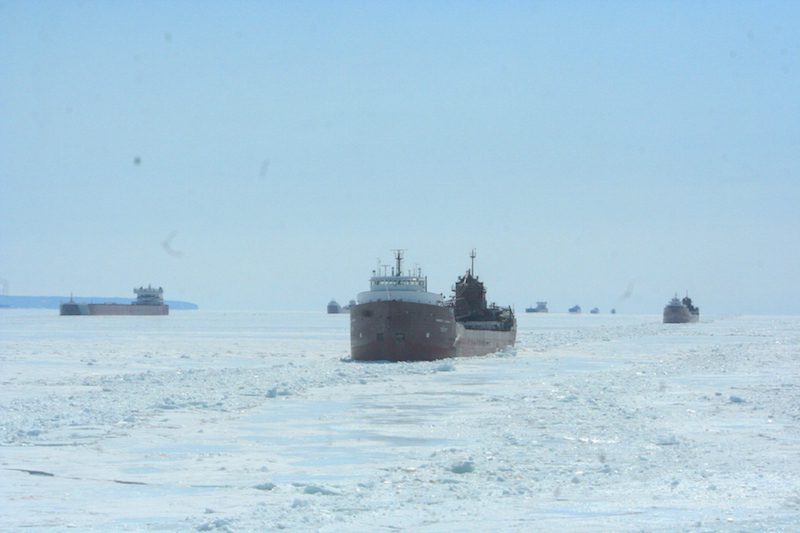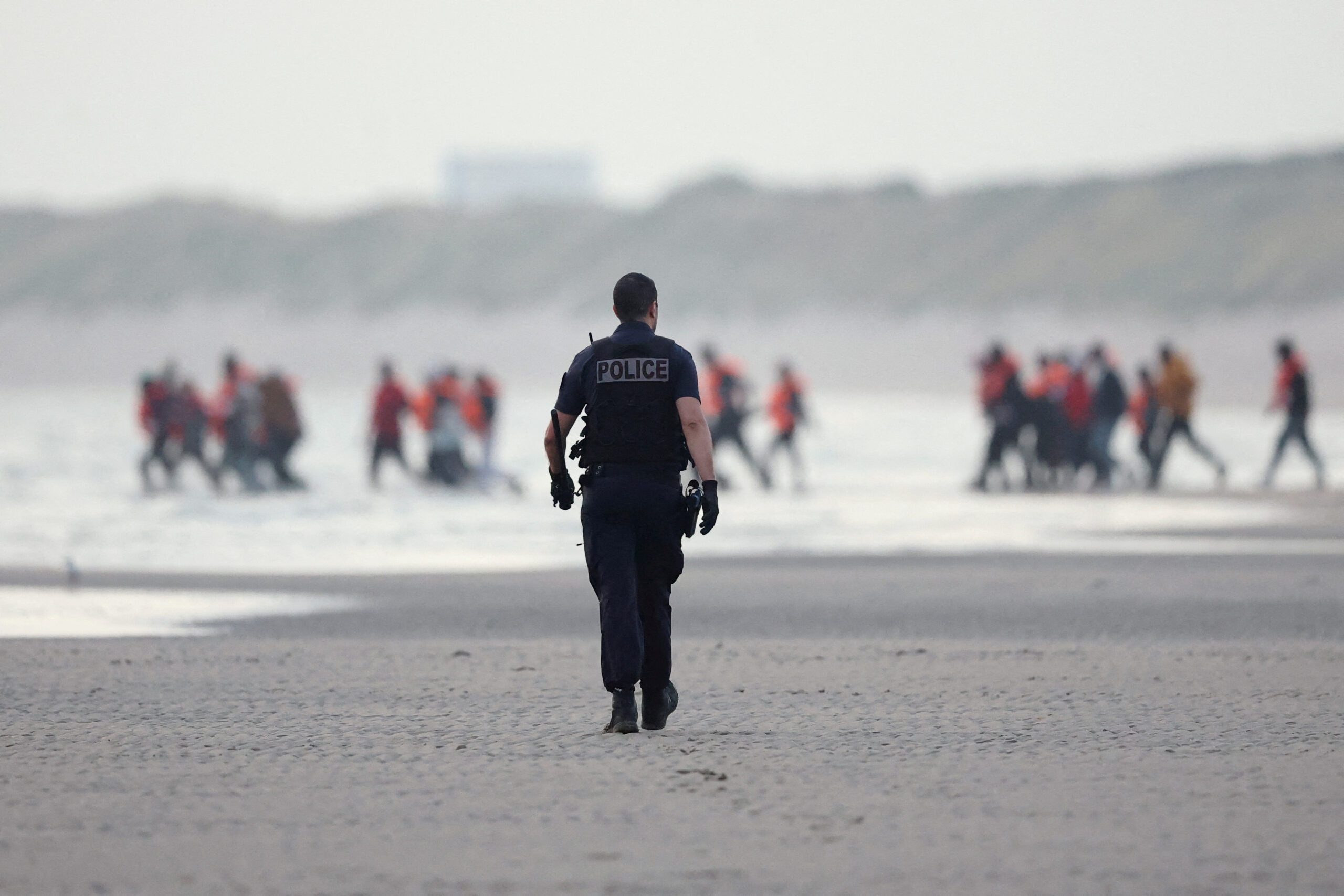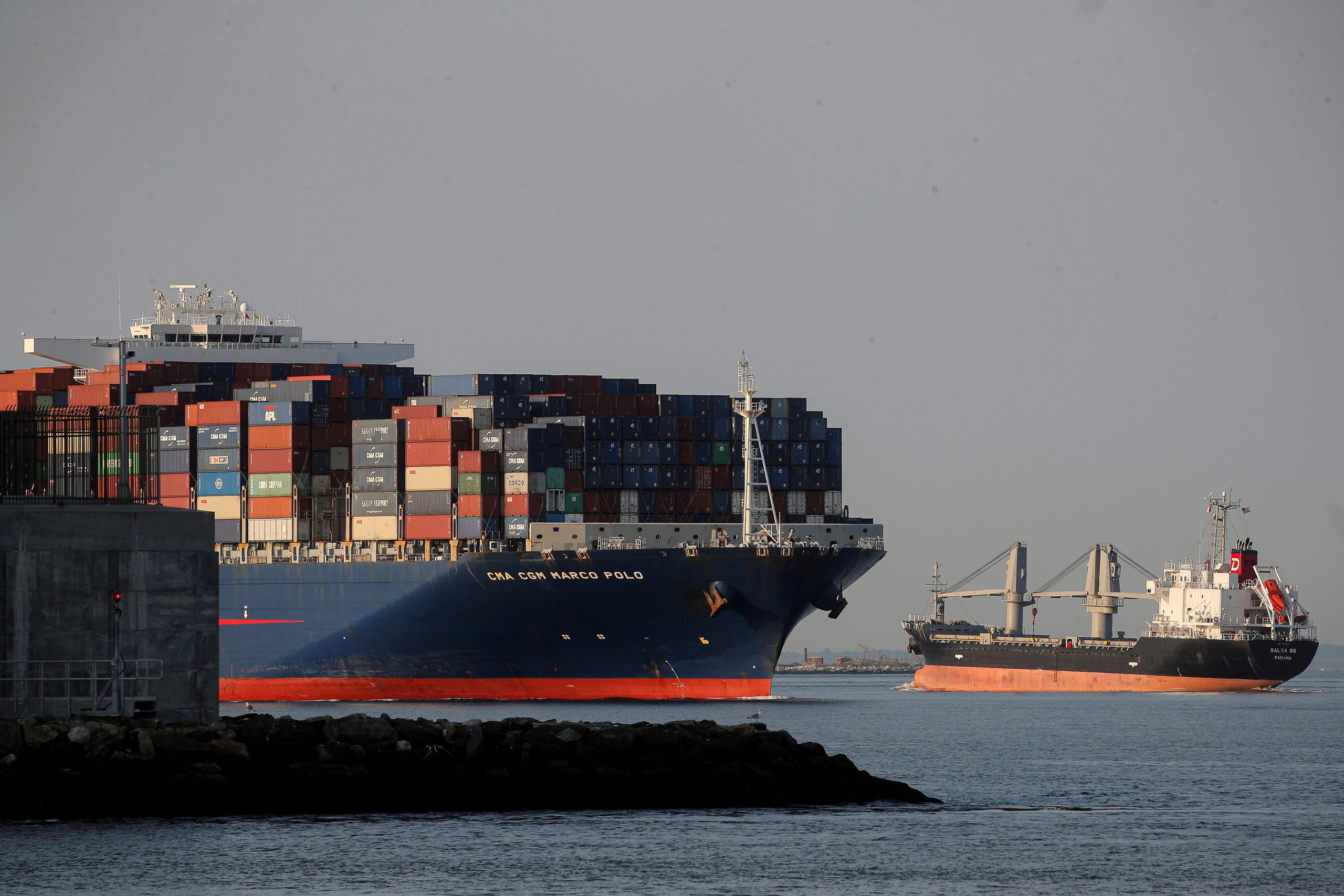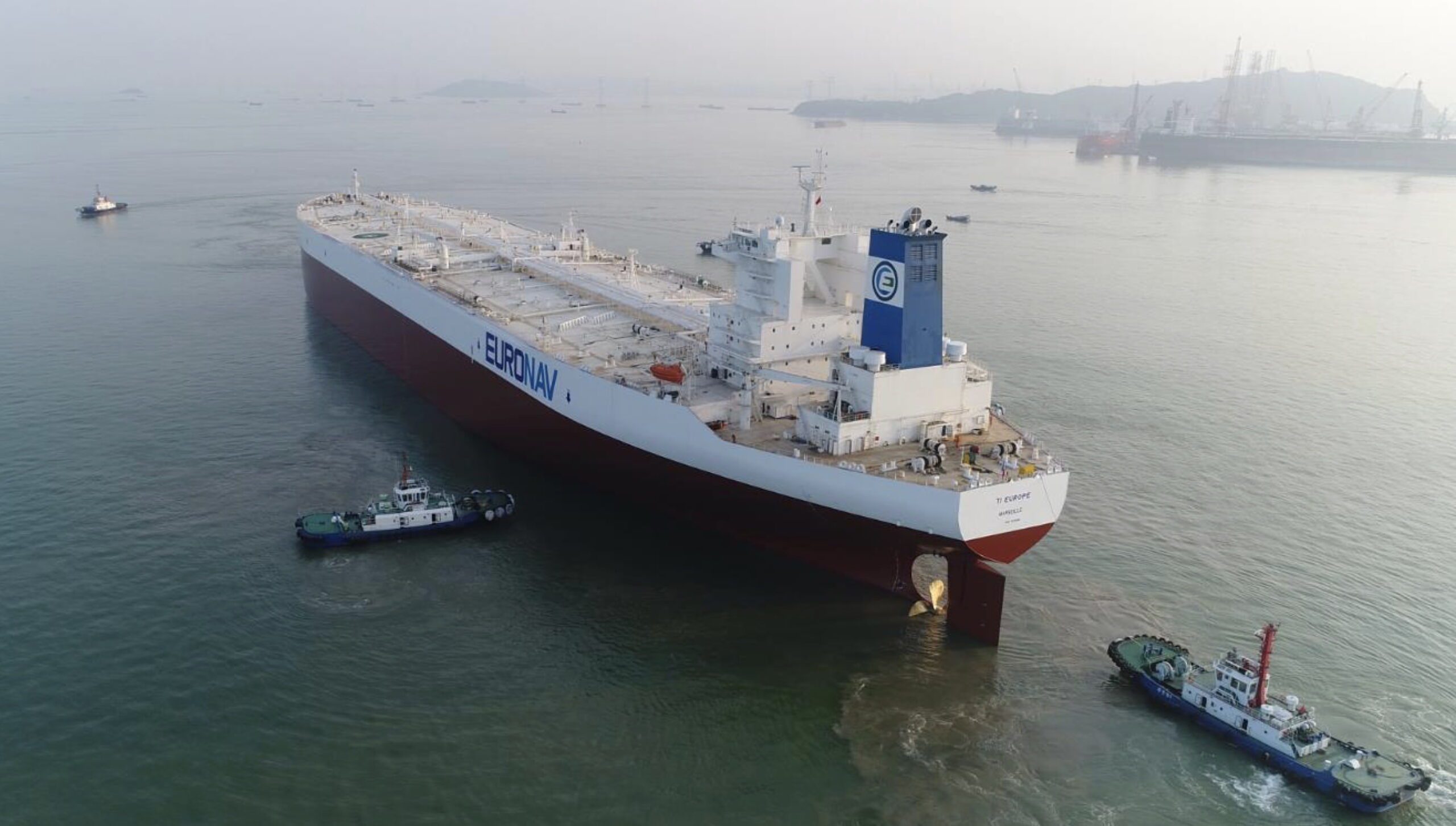Vessels carrying commodities to and from ports throughout the Great Lakes seen wait on eastern Lake Superior while U.S. and Canadian Coast Guard ice breakers create tracks for the vessels to continue transiting, April 7, 2015. U.S. Coast Guard Photo
With winter approaching, worsening ice conditions and high water, the Great Lakes region could be facing potential job losses and serious financial implications due to aging icebreaking assets on both sides of the border, according to U.S.-based Lake Carriers’ Association.
The reliability and number of U.S. and Canadian icebreaking assets on the Great Lakes is seen as critical for the flow of cargoes to freshwater ports during the winter and spring commercial shipping seasons. But, unfortunately, the outlook for reliable icebreaking on the Great Lakes is not good, the Lake Carriers’ Association said.
In fact, the number of U.S. and Canadian Coast Guard icebreakers today is just 60 percent of what they were in the 1980s and 1990s.
The U.S. Coast Guard has only 11 icebreakers in service, down from a peak of 19. During the ice season, as many as five have been sidelined with engine failures and other age-related problems. North of the border, the Canadian Coast Guard has only two icebreakers, down from seven.
An aging fleet is also an issue. Six of the U.S. Great Lakes icebreakers are 40 years-old and the Canadian’s two icebreakers are 50 and 35 years-old.
“The nation’s economy depends on reliable and predictable icebreaking on the Great Lakes. Last year, when cargoes carried on U.S. Great Lakes ships were delayed or cancelled because of inadequate icebreaking, 5,000 jobs were lost and the economy took a $1 billion hit,” said Jim Weakley, President of Lake Carriers’ Association (LCA).
Compounding the problem of recurring severe ice conditions are record high water levels across the Great Lakes and connecting channels, according to Justin Westmiller, Director of Homeland Security and Emergency Management for St. Clair County, Michigan.
“Annual ice jams at places like Algonac, East China and Marine City in the St Clair River, cause flooding of properties and damage to sea walls. Icebreaking is essential to minimizing damaging impacts to shoreline communities from ice,” stated Westmiller.
Last year, three U.S. icebreakers were out of action during the ice season with significant engine problems. The Canadians also suffered engine failures that kept them from joining the effort in eastern Lake Superior and the St. Mary’s River where dozens of idled commercial ships were stranded for days.
“We continue to voice our concerns that both the U.S. and Canadian Coast Guards need to take this seriously and put more icebreaking resources in the Great Lakes and repower the current aging assets to ensure they can continue to break ice,” said Weakley. “However, the response has been slow as molasses in winter and insufficient for the decrepit fleet of icebreakers. We are at a critical juncture, just to keep the small number of icebreaking ships operating is an ongoing challenge.”
This lack of adequate icebreaking on the Lakes continues to have far-reaching national implications, the Lake Carriers’ Association says.
“Our industry requires efficient deliveries this winter which customers depend on to keep their operations uninterrupted,” stated Mark Pietrocarlo, LCA Board Chairman.
Dave Groh, President of VanEnkevort Tug and Barge added, “We are hopeful that cargo will move this winter, it is critical to keeping the steel mills and power stations operating and people employed.”

 Join The Club
Join The Club











